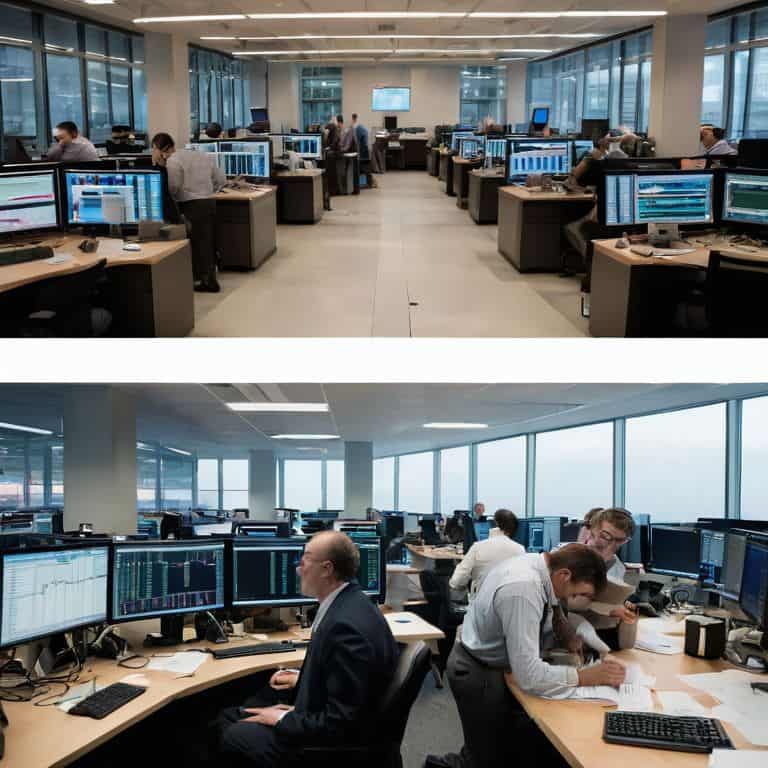I still remember the day I had to make a choice between variable vs fixed interest rates for my first mortgage. It was a daunting task, especially with all the conflicting advice from banks, financial advisors, and even friends. The decision seemed simple enough, but the implications were far-reaching. I had to consider my financial goals, risk tolerance, and the overall state of the economy. It was a classic case of information overload, and I knew I wasn’t alone in feeling overwhelmed.
As someone who’s spent years analyzing market trends and tracking global shipping logistics, I’ve learned to cut through the noise. In this article, I’ll share my no-nonsense advice on navigating the complex world of interest rates. I’ll give you a reality check on the pros and cons of variable vs fixed interest rates, and provide you with the insights you need to make an informed decision. My goal is to empower you with data-driven knowledge, not vague promises or sales pitches. By the end of this article, you’ll be equipped to make a decision that’s right for you, without the hype or confusion.
Table of Contents
Variable Interest Rates
Variable interest rates are defined as interest rates that can fluctuate over the life of a loan or credit product, often tied to a benchmark rate. The core mechanism of variable interest rates is based on the lender’s ability to adjust the rate in response to changes in the market, with the main selling point being the potential for lower initial rates. This means that borrowers may be able to secure a more favorable interest rate at the outset, which can lead to lower monthly payments.
As someone who’s spent years studying the ebbs and flows of the economy, I can tell you that variable interest rates are a double-edged sword. On the one hand, they can offer a degree of flexibility that fixed rates can’t match, allowing borrowers to take advantage of falling interest rates. However, this also means that borrowers are exposed to the risk of rising rates, which can increase their monthly payments and make it harder to budget for the future. It’s a delicate balance that requires careful consideration and a deep understanding of the underlying market forces at play.
Fixed Interest Rates
Fixed interest rates, on the other hand, are interest rates that remain the same over the life of a loan or credit product, providing a predictable and stable monthly payment. The core mechanism of fixed interest rates is based on a predetermined rate that is set at the time of borrowing, with the main selling point being the certainty and stability it offers. This means that borrowers can plan their finances with confidence, knowing exactly how much they’ll be paying each month.
As a financial journalist, I’ve seen firsthand how fixed interest rates can provide a sense of security and predictability for borrowers. By locking in a fixed rate, borrowers can protect themselves from potential rate hikes and create a more stable financial foundation. However, this also means that they may miss out on potential savings if interest rates were to fall, which can be a significant opportunity cost. It’s a trade-off that requires careful consideration of one’s individual financial situation and long-term goals.
Head-to-Head Comparison: Variable vs Fixed Interest Rates
| Feature | Variable Interest Rate | Fixed Interest Rate |
|---|---|---|
| Price | Generally lower | Generally higher |
| Key Feature | Rate can fluctuate | Rate remains constant |
| Best For | Those who can adapt to rate changes | Those who prefer predictable payments |
| Risk Level | Higher due to potential rate increases | Lower due to fixed payments |
| Flexibility | Often more flexible repayment terms | Less flexible repayment terms |
| Benefits | Potential for lower rates if market conditions favor | Protection from rising interest rates |
| Common Use Cases | Credit cards, lines of credit | Mortgages, personal loans |
Cracking Variable vs Fixed Interest Rates
When it comes to variable vs fixed interest rates, understanding the implications of each is crucial for making informed financial decisions. The choice between these two can significantly impact your financial stability and growth, making it a critical criterion to evaluate.
In a head-to-head analysis, variable interest rates offer more flexibility in terms of potential rate decreases, which can lead to lower payments. However, they also come with the risk of rate increases, making budgeting more challenging. On the other hand, fixed interest rates provide predictability, allowing borrowers to plan their expenses with certainty.
The practical implications of these differences are significant. Variable rates might be beneficial in a declining interest rate environment, but they can be costly if rates rise. In contrast, fixed rates shield borrowers from potential increases but might not benefit from decreases. Considering these factors, fixed interest rates are the clear winner in terms of financial security and predictability.
Key Takeaways: Navigating Variable vs Fixed Interest Rates
I’ve found that variable interest rates can be a double-edged sword – they offer flexibility, but also expose borrowers to potential rate hikes, which can be devastating in a rising interest rate environment
Fixed interest rates, on the other hand, provide a sense of security and stability, allowing borrowers to budget with precision, but may come with higher upfront costs or less flexibility to take advantage of falling interest rates
My analysis of global shipping logistics and historical economic cycles suggests that, in today’s market, a hybrid approach – combining the benefits of both variable and fixed rates – may be the most prudent strategy for those looking to minimize risk and maximize returns
Cutting Through the Hype
The choice between variable and fixed interest rates isn’t just about numbers – it’s about understanding the rhythm of the market and making a bet on the future; the question is, are you betting on stability or agility?
Eleanor Vance
The Final Verdict: Which Should You Choose?
As I’ve delved into the world of variable vs fixed interest rates, it’s become clear that the key to making an informed decision lies in understanding your personal financial situation and goals. The summary comparison table and our analysis of cracking variable vs fixed interest rates have shown that both options have their pros and cons. Variable interest rates can offer more flexibility and potentially lower rates, but they also come with the risk of unpredictable payments. On the other hand, fixed interest rates provide stability and predictable payments, but may result in higher rates over time.
Ultimately, the choice between variable and fixed interest rates depends on the type of user. For those who value stability and predictability, fixed interest rates are the way to go. This is ideal for individuals with fixed incomes or those who are risk-averse. On the other hand, variable interest rates are best suited for users who are financially agile and can adapt to changing market conditions. They offer the potential for lower rates and more flexibility, making them a good choice for those who are willing to take on a bit more risk and can afford to do so.
Frequently Asked Questions
What are the key factors that influence the decision between variable and fixed interest rates?
For me, it boils down to three key factors: your financial goals, risk tolerance, and the current economic landscape. Are you prioritizing flexibility or predictability? Can you stomach potential rate hikes or do you need stability? And what’s the broader economic context – are we in a high-inflation environment or a low-growth scenario? These considerations will help you make an informed decision between variable and fixed interest rates.
How do economic indicators, such as global shipping logistics, impact the choice between variable and fixed interest rates?
As someone who tracks global shipping logistics, I can tell you that a slowdown in trade volumes can signal an impending economic downturn, making fixed interest rates a safer bet. Conversely, a surge in shipping activity can indicate a growing economy, potentially justifying variable rates to take advantage of lower borrowing costs.
What are the potential risks and benefits of choosing a variable interest rate over a fixed one, and vice versa?
When weighing variable vs fixed rates, consider this: variable rates offer potential savings if market rates drop, but you’re exposed to unpredictable increases. Fixed rates provide stability, but you might miss out on lower rates if the market shifts. It’s a trade-off between flexibility and certainty.




